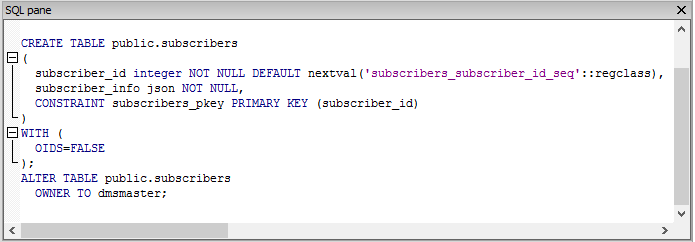AWS Database Blog
Tag: RDS
Wave: A Private Location App Running on Amazon RDS
By Pablo Clemente, CTO, Wave How many times have you endured the painful process of meeting up with someone and having to constantly text or call them to find out where exactly they are? Doing this is not only inefficient and frustrating, but also a potential danger for anyone who is driving or moving. Recently, […]
Implement Linked Servers with Amazon RDS for Microsoft SQL Server
Linked servers allow Microsoft SQL Server to run SQL Server statements on other instances of database servers. In this blog post, we focus on connectivity to other instances of SQL Server in Amazon RDS, hosted in Amazon EC2, or available from your data centers via a VPN or direct connect. We examine two connectivity scenarios: […]
Performing Parallel Queries and Phrase Searching with Amazon RDS for PostgreSQL 9.6.1
Jeff Levine is a solutions architect for Amazon Web Services. As a solutions architect for Amazon Web Services, one of my responsibilities is to help our customers to learn about new features and capabilities of our services. Amazon RDS makes it possible to set up, operate, and scale relational databases in the cloud without having […]
Streaming Changes in a Database with Amazon Kinesis
Emmanuel Espina is a software development engineer at Amazon Web Services. In this blog post, I will discuss how to integrate a central relational database with other systems by streaming its modifications through Amazon Kinesis. The following diagram shows a common architectural design in distributed systems. It includes a central storage referred to as a […]
Installing JD Edwards EnterpriseOne on Amazon RDS for Oracle
Marc Teichtahl is a solutions architect at Amazon Web Services. Amazon Relational Database Service (Amazon RDS) is a web service that makes it easier to set up, operate, and scale a relational database in the cloud. It provides cost-efficient, resizable capacity for an industry-standard relational database and manages common database administration tasks. Amazon RDS offers […]
Migrating Microsoft SQL Server Enterprise Workloads to Amazon RDS: Part 1
Prudhvi Janga is a software development engineer in Amazon Web Services SQL Server Native Backups and Restores Using RDS and Amazon S3 If you’re thinking about moving your on-premises Microsoft SQL Server databases to Amazon RDS, one option to migrate your databases is to use native SQL Server backups. Backups can be uploaded to AWS […]
Implement an Early Warning System for Transaction ID Wraparound in Amazon RDS for PostgreSQL
Shawn McCoy is a database engineer in Amazon Web Services. As a PostgreSQL database owner, you know that critical maintenance operations are handled by the autovacuum process. The effectiveness of this background process is constantly being improved with each release. For most PostgreSQL users, the default settings will work just fine. However, some workloads and […]
Scaling Your Amazon RDS Instance Vertically and Horizontally
This post was reviewed and updated May,2022. As a managed service, Amazon Relational Database Service (Amazon RDS) takes care scaling your relational database so your database can keep up with the increasing demands of your applications. In this post, we look into how we can vertically and horizontally scale your RDS instance. Vertical scaling refers […]
Using Amazon RDS for Oracle as the Oracle SOA Suite Database
This post is written by Fabio Douek, an architect at AWS Partner Rubicon Red. When we started to provision Oracle Fusion Middleware platforms with AWS, we took advantage of the ability to create AWS infrastructure within minutes. We can also use MyST to provision complex platforms that are EDG-compliant with Oracle Fusion Middleware in less […]
Migrate PostgreSQL Databases and Perform Ongoing Replication with the AWS Database Migration Service
Jeff Levine is a solutions architect for Amazon Web Services. As a solutions architect for Amazon Web Services, I help our customers to migrate workloads to the AWS Cloud, a key part of which includes their databases. The AWS Database Migration Service (AWS DMS) enables organizations to migrate data to and from a variety of […]








